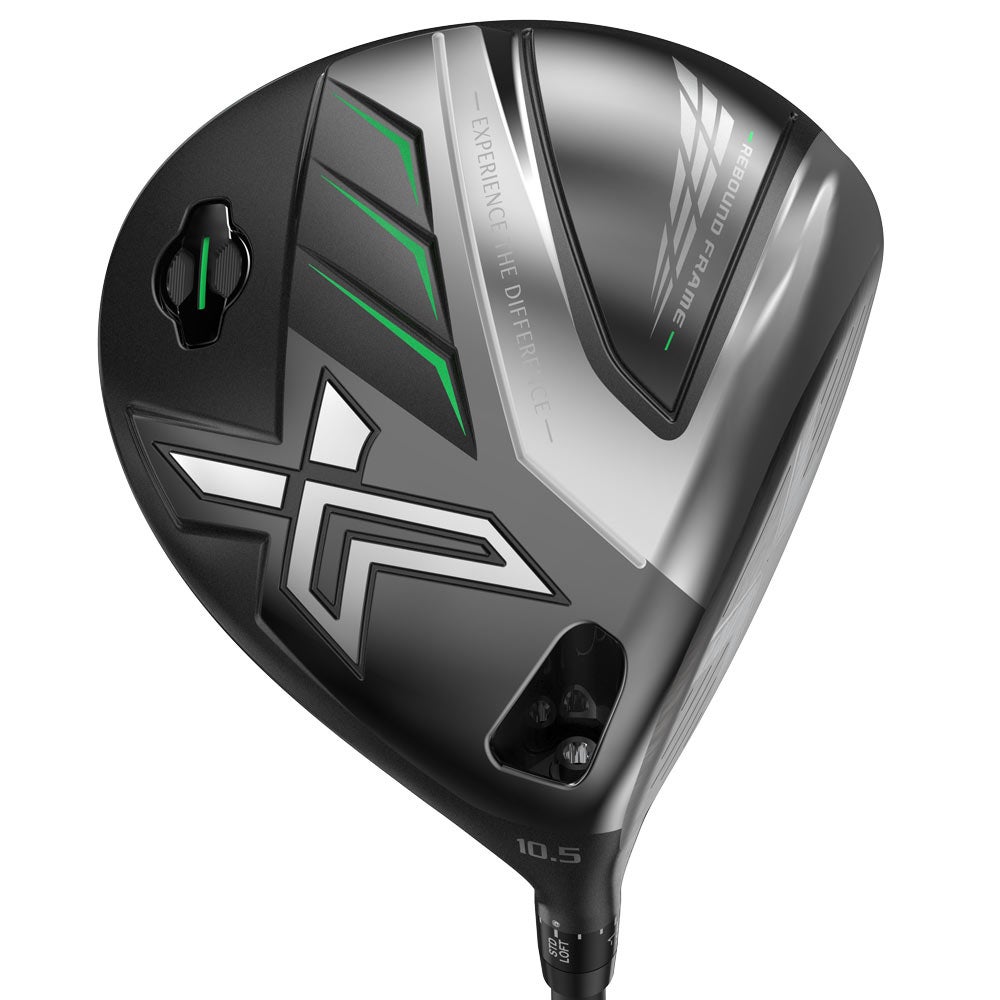
Is it you or the club that’s the problem?
Getty Images
Welcome to Gear Questions You’re Afraid to Ask, a GOLF.com series produced in partnership with Cleveland/Srixon Golf. In this column, we explore some indicators to look for come time to determine if your clubs fit your swing.
The game of golf is chockfull with plenty of indicators to let you know if you’ve done something wrong during your golf swing. The first is feel — you sometimes know when you’ve made a bad swing because it felt off — whether it be too quick, slow, out of balance, sequence and so on. The next is audible feedback — how the ball sounds at impact can tell you a lot about how well it was struck — whether on or off the sweet spot. And, of course, there’s the ball flight itself — you can tell if you did or didn’t make a good swing based on how far the ball flies and in what direction it goes.
Or can you?
Truth be told, if you don’t know where on the face you’re making contact, you might not truly know what is happening relative to your swing and your ability to hit consistent golf shots. Let’s take a deeper look at what this means and whether or not you truly need a launch monitor to determine if your issue is a swing problem or a contact problem.
The best way to determine whether your driver is fit properly for you—meaning you have the right shaft flex and length, clubhead weighting and face angle, loft, and so on — is to evaluate precisely where on the clubface you regularly make contact with the ball. Again, this is immensely important because where you strike the ball on the clubface greatly affects how the ball flies. Shots fired further away from the sweet spot react exponentially differently than hits off the center of the clubface. And if you’re consistently hitting towards the toe, heel, or high/low on the face, you won’t know if your ball flight is a function of how you swing or if it’s a result of your equipment reacting to your mis-hits.
Maybe it’s both.
Here’s what you do. Go to your local market or drugstore and get an aerosol spray can of foot powder. Launch monitor aficionados have long used this as a tool to quickly see where on the face the ball makes contact, in a way that leaves little to no mess. Once you have it, spray a light coat on the clubface of your driver and woods and go to work hitting some balls.
All of our market picks are independently selected and curated by the editorial team. If you buy a linked product, GOLF.COM may earn a fee. Pricing may vary.
XXIO X
Premium feel, aggressive looks, and stouter shafts make XXIO X the irresistible choice for accomplished players seeking to further advance their game with lightweight, easy-to-swing clubs.
If you find you’re striking the ball high on the face, it’s likely the reason why you might have too high a launch with not enough spin. Too low, and it could be the reason why your drives have too much spin. Heel hits impart fade spin and toe hits produce draw-spin. Because of this, you may be thinking your fade is a result of a slightly outside-in swing path, but that might not be true. It may be because you’re catching it off the heel of the clubface. And the opposite is true for a draw — you may think you’re swinging a little inside-out, but in reality, it’s the gear effect in the toe hit that is causing the ball to draw.
With your woods, gear effect isn’t quite as pronounced as it is with the driver but it’s still there. So, be sure and evaluate whether or not your striking your woods cleanly and in the center of the face.
The shaft you use can affect your ability to make good swings and consequently, affect your ball-striking. If it’s too long you might have more heel strikes — too short and you may catch it on the toe more often. If you play a shaft that is too rigid, you might have trouble squaring the face at impact which can cause slices. If you have a shaft that bends too much, you might over-release and hit a lot of hooks.
Remember that your driver probably comes with an adjustable sleeve that will allow you to adjust the face angle and loft to help you improve your ballfight. Also, some equipment companies offer more than one head shape to accommodate different needs. For instance, Srixon offers the ZX5, which has a triangle shape and a lower profile for higher flights; the ZX7 comparatively has a more rounded shape and a taller face for more penetrating drives.
Where you make contact on the face matters with irons and wedges, too. And yes, you can do the same and spray some foot powder to see where you’re making contact. But there’s also another way: looking at your divots.
Before we dig in, remember that your divots should always come after you make contact with the golf ball. Really, there’s no point in trying to make sense of your divot pattern unless you’re at the very least, making ball first contact. With your wedges, this might be a function of your bounce angle, so try experimenting with lower or higher bounce angles to see what better fits your attack angle.
If you’re making a divot that is about the same size of your clubface in front of the ball and pretty much in line with the target and you’re hitting the ball straight, then your irons and wedges are likely tuned well for your swing. If you’re seeing a divot on the heel side, it’s possible your clubs are a bit too upright. If you’re making a dent out towards the toe side, your clubs are likely too flat. No divot at all may be a sign your clubs are too short — too deep a divot and it might be because your clubs are too long.
Homing in on how well you strike the ball is essential if you want to know for sure what’s causing your ball to bend—learn where you’re making contact first and you’ll be on the right track to make lasting improvements with your swing. It may very well be a swing issue that’s affecting your ball-striking — but it’s always better to find out if it’s the club causing the problem before you start tweaking your swing.
Want to overhaul your own bag for 2022? Visit the expert fitters at our sister company, True Spec Golf. For more on the latest gear news and information, make sure to check out our recent Fully Equipped podcast in the Spotify link below.











